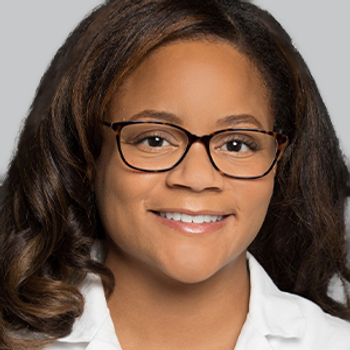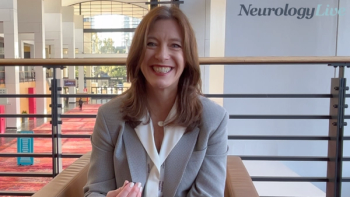
- Fall 2024
College Checklist for People Living With Migraine
Key Takeaways
- Migraine significantly affects adolescents' quality of life, with many continuing to experience symptoms into adulthood, necessitating effective management and transition planning.
- Complementary and alternative medicine, such as mindfulness and meditation, can positively impact migraine management, reducing headache frequency and improving quality of life.
Transition to college life poses unique challenges for students living with migraine, and a comprehensive checklist helps ensure they are prepared for this critical phase.
Migraine is a disabling neurological disease that often starts in childhood. More than 6% of adolescents are affected in the US alone.1,2 In the Global Burden of Disease (GBD) study of 2016, migraine was ranked among the topmost disabling diseases in the age group of 15 to 49 years.3 In adolescents and young adults (AYA), migraine can cause major impacts on quality of life such as limiting social activities, school or college absenteeism, suboptimal learning outcomes, and higher risk of dropping out of school.4,5
Timely and aggressive treatment can lead to remission in 18% to 34% of adolescents. However, more than 46% of them will have their migraine attacks persist and last into adulthood.6,7 These patients will then need timely transition of care in order to prevent worsening of their disease state.
Young adults who are dependent on their caretakers may often feel overwhelmed and unprepared to transition into adult care if transition planning is not undertaken in a timely way. In an ideal transition, AYAs with chronic medical conditions receive uninterrupted, developmentally appropriate medical care leading to positive health behaviors. Lack of successful transition often leads to disruption of care, poor health outcomes, and negative effect on quality of life.8-10
The transition from high school to college is an extremely important milestone that comes with a unique set of challenges. This change comes along with an increase in migraine triggers such as stress and anxiety given academic demands, irregular sleep patterns, irregular diet patterns, increased screen time, and eye strain. Lack of familiarity and support system can also play a role in mental health, which indirectly affects migraine disease.11-16
Along with the pharmacological treatment that is guided by physicians, complementary and alternative medicine (CAM) can play a large role in management of migraine. Parents and children can explore these sets of modalities to help manage their migraine. It has been shown that up to 82% of people living with migraine seek CAM options.17,18
Mind-body interventions such as meditation, yoga, breathwork, and mindfulness can be useful and show evidence of positive effects on pain perception, increased pain threshold, and improved quality of life.18-20 Results of multiple studies done by Grazzi et al have shown mindfulness training decreased both headache frequency and Migraine Disability Assessment (MIDAS) scores in patients.21,22 With the introduction of various software applications (apps) for meditation, mindfulness, and biofeedback, we can certainly suggest their use in daily routine for persons living with migraine.23-25 Headache tracking, on the other hand, is crucial for ongoing diagnosis and management of migraine. Young adults in college can use one of the many apps that are available to keep a headache diary.26-28
We are introducing A Comprehensive College Migraine Checklist to support parents and students who are going to college/university so that they can feel prepared for a successful transition.
The checklist has 5 components, as follows:
- Basic health checklist
- Migraine-specific checklist
- Lifestyle and environmental adjustments
- Red flags
- Migraine first aid kit
1. Basic health checklist
Make sure future college students have the following:
- Health insurance card
- Immunization record
- List of ongoing diagnosed medical conditions
- Student health center contact information
- Maintenance medications ready for the next 3 months
- Pharmacy set up for future prescription refills
- List of all current medications and allergies
- Contact information of the current primary care team/pediatrician/headache specialist/neurologist
2. Migraine-specific checklist
- Medical documentation
- History of migraine, including diagnosis, testing, treatment plans, and any special considerations
- Copies of prescriptions
- Medical contacts
- Identify local headache specialists and schedule a new patient appointment with them as soon as possible depending on availability.
3. Lifestyle and environmental adjustments
- Headache tracker app on phone
- Mindfulness apps
- Meditation apps
- Living arrangements: Choose a dorm/living space that is quiet and can be kept dark when migraine attacks occur. Essentials can include the following:
- Blackout curtains
- Earplugs
- Sleeping mask
4. Red flags (when to get an evaluation in the emergency department)
- Doesn’t feel like a regular headache
- Onset is sudden and becomes extremely high intensity rapidly
- New symptoms such as fever, rash, vision changes, and confusion
- Loss of sensation or weakness in any body part
5. Migraine first aid kit
- Water and healthy snacks
- Comfort items
- Ice packs or heat pads
- Eye mask
- Earplugs/noise-canceling headphones
- Personal care items
- Sunglasses
- Tissues and wet wipes for personal hygiene, if nausea occurs
- Need to ensure that the first aid kit is the following:
- Portable and accessible
- Has been regularly always kept up to date
We hope that the college checklist for people living with migraine can be useful for future college students and their parents, and will provide the support and care necessary to successfully transition to college.
REFERENCES
1. Bigal ME, Lipton RB, Winner P, et al. Migraine in adolescents: association with socioeconomic status and family history. Neurology. 2007;69(1):16-25. doi:10.1212/01.wnl.0000265212.90735.64
2. Chong SC, Chan YH, Ong HT, Low PS, Tay SK. Headache diagnosis, disability and co-morbidities in a multi-ethnic, heterogeneous paediatric Asian population. Cephalalgia. 2010;30(8):953-961. doi:10.1177/0333102409356327
3. GBD 2016 Disease and Injury Incidence and Prevalence Collaborators. Global, regional, and national incidence, prevalence, and years lived with disability for 328 diseases and injuries for 195 countries, 1990-2016: a systematic analysis for the Global Burden of Disease Study 2016. Lancet. 2017;390(10100):1211-1259. doi:10.1016/S0140-6736(17)32154-2
4. Powers SW, Patton SR, Hommel KA, Hershey AD. Quality of life in childhood migraines: clinical impact and comparison to other chronic illnesses. Pediatrics. 2003;112(1 pt 1):e1-e5. doi:10.1542/peds.112.1.e1
5. Turner SB, Szperka CL, Hershey AD, Law EF, Palermo TM, Groenewald CB. Association of headache with school functioning among children and adolescents in the United States. JAMA Pediatr. 2021;175(5):522-524. doi:10.1001/jamapediatrics.2020.5680
6. Congdon PJ, Forsythe WI. Migraine in childhood. a review. Clin Pediatr (Phila). 1979;18(6):353-359. doi:10.1177/000992287901800608
7. Monastero R, Camarda C, Pipia C, Camarda R. Prognosis of migraine headaches in adolescents: a 10-year follow-up study. Neurology. 2006;67(8):1353-1356. doi:10.1212/01.wnl.0000240131.69632.4f
8. Betz CL. Transition of adolescents with special health care needs: review and analysis of the literature. Issues Compr Pediatr Nurs. 2004;27(3):179-241. doi:10.1080/01460860490497903
9. Kennedy A, Sloman F, Douglass JA, Sawyer SM. Young people with chronic illness: the approach to transition. Intern Med J. 2007;37(8):555-560. doi:10.1111/j.1445-5994.2007.01440.x
10. Margolis R, Wiener L, Pao M, Malech HL, Holland SM, Driscoll P. Transition from pediatric to adult care by young adults with chronic granulomatous disease: the patient’s viewpoint. J Adolesc Health. 2017;61(6):716-721. doi:10.1016/j.jadohealth.2017.06.017
11. Kelman L. The triggers or precipitants of the acute migraine attack. Cephalalgia. 2007;27(5):394-402. doi:10.1111/j.1468-2982.2007.01303.x
12. Friedman DI, De ver Dye T. Migraine and the environment. Headache. 2009;49(6):941-952. doi:10.1111/j.1526-4610.2009.01443.x
13. Kempuraj D, Selvakumar GP, Thangavel R, et al. Mast cell activation in brain injury, stress, and post-traumatic stress disorder and Alzheimer’s disease pathogenesis. Front Neurosci. 2017;11:703. doi:10.3389/fnins.2017.00703
14. Rose FC. Trigger factors and natural history of migraine. Funct Neurol. 1986;1(4):379-384.
15. Martin VT, Behbehani MM. Toward a rational understanding of migraine trigger factors. Med Clin North Am. 2001;85(4):911-941. doi:10.1016/s0025-7125(05)70351-5
16. Adams J, Barbery G, Lui CW. Complementary and alternative medicine use for headache and migraine: a critical review of the literature. Headache. 2013;53(3):459-473. doi:10.1111/j.1526-4610.2012.02271.x
17. Wells RE, Beuthin J, Granetzke L. Complementary and integrative medicine for episodic migraine: an update of evidence from the last 3 years. Curr Pain Headache Rep. 2019;23(2):10. doi:10.1007/s11916-019-0750-8
18. Wells RE, Bertisch SM, Buettner C, Phillips RS, McCarthy EP. Complementary and alternative medicine use among adults with migraines/severe headaches. Headache. 2011;51(7):1087-1097. doi:10.1111/j.1526-4610.2011.01917.x
19. Millstine D, Chen CY, Bauer B. Complementary and integrative medicine in the management of headache. BMJ. 2017;357:j1805. doi:10.1136/bmj.j1805
20. Wells RE, Baute V, Wahbeh H. Complementary and integrative medicine for neurologic conditions. Med Clin North Am. 2017;101(5):881-893. doi:10.1016/j.mcna.2017.04.006
21. Grazzi L, D’Amico D, Raggi A, et al. Mindfulness and pharmacological prophylaxis have comparable effect on biomarkers of inflammation and clinical indexes in chronic migraine with medication overuse: results at 12 months after withdrawal. Neurol Sci. 2017;38(suppl 1):173-175. doi:10.1007/s10072-017-2874-0
22. Grazzi L, Sansone E, Raggi A, et al. Mindfulness and pharmacological prophylaxis after withdrawal from medication overuse in patients with chronic migraine: an effectiveness trial with a one-year follow-up. J Headache Pain. 2017;18(1):15. doi:10.1186/s10194-017-0728-z
23. Keller A, Meyer B, Wöhlbier HG, Overath CH, Kropp P. Migraine and meditation: characteristics of cortical activity and stress coping in migraine patients, meditators and healthy controls—an exploratory cross-sectional study. Appl Psychophysiol Biofeedback. 2016;41(3):307-313. doi:10.1007/s10484-016-9334-0
24. Komandur B, Martin PR, Bandarian-Balooch S. Mindfulness and chronic headache/migraine: mechanisms explored through the fear-avoidance model of chronic pain. Clin J Pain. 2018;34(7):638-649. doi:10.1097/AJP.0000000000000580
25. Zeidan F, Vago DR. Mindfulness meditation-based pain relief: a mechanistic account. Ann N Y Acad Sci. 2016;1373(1):114-127. doi:10.1111/nyas.13153
26. Huygens MW, Swinkels IC, de Jong JD, et al. Self-monitoring of health data by patients with a chronic disease: does disease controllability matter? BMC Fam Pract. 2017;18(1):40. doi:10.1186/s12875-017-0615-3
27. Seng EK, Prieto P, Boucher G, Vives-Mestres M. Anxiety, incentives, and adherence to self-monitoring on a mobile health platform: a naturalistic longitudinal cohort study in people with headache. Headache. 2018;58(10):1541-1555. doi:10.1111/head.13422
28. Minen MT, Gumpel T, Ali S, Sow F, Toy K. What are headache smartphone application (app) users actually looking for in apps: a qualitative analysis of app reviews to determine a patient centered approach to headache smartphone apps. Headache. 2020;60(7):1392-1401. doi:10.1111/head.13859
Articles in this issue
about 1 year ago
A Provider's Cheat Sheet Guide to Understanding Sleepabout 1 year ago
Letter From the Editor – Fall 2024Newsletter
Keep your finger on the pulse of neurology—subscribe to NeurologyLive for expert interviews, new data, and breakthrough treatment updates.









































